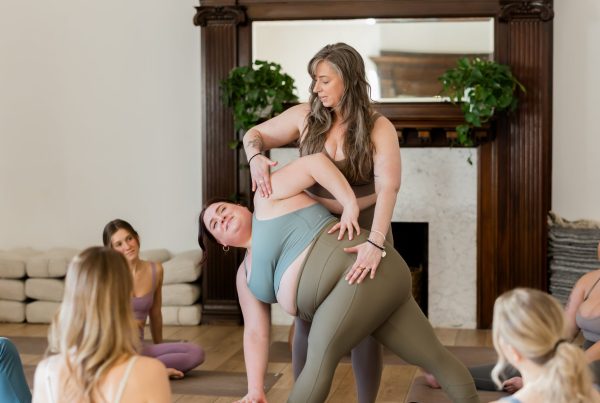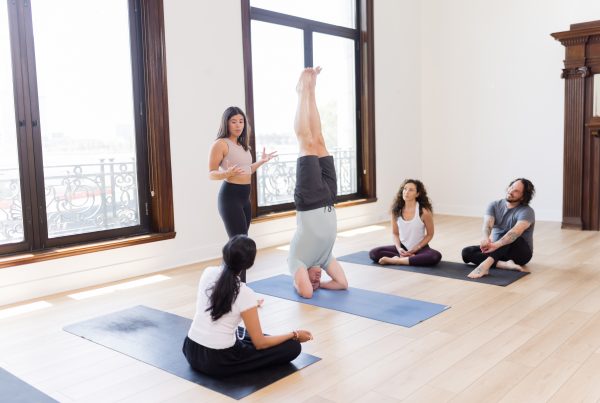
My personal journey with Ayurveda…
Ayurveda is something that was weaving its way in and out of my life for a very long time. It didn’t have a very deep impact on me until I was in my 20s and went on a pilgrimage to India. It was there that I made my way to an Ayurvedic center in Varkala. I met with an Ayurvedic practitioner who took my pulse and asked me some random questions about my sleep, my stress, my job, and whether or not I shaved my arms. He looked at my nails, looked into my eyes, and talked to me a bit more about things that didn’t appear to have anything to do with the sinus infections I’d been getting every year since I was a teenager or the strep throat I’d gotten every winter since I was a little kid. I didn’t understand how the quality of my friendships, the food I ate, and the time I woke up or went to bed could have anything to do with preventing disease in my body. I was even more confused over how my NYC diet of salads and smoothies on-the-go was something he seemed to shake his head over instead of praise.
After jotting down some notes and asking me more wild questions (like whether or not I was a natural blonde…) he told me that during my stay at the Ayurvedic center, I had to wake up every day before sunset to receive treatments for my sinuses. He also handed me a u-shaped copper contraption to use on my tongue every morning. This was the very beginning of my Nasya Practice and my Tongue Scraping Practice. I followed his prescription of scraping my tongue each morning upon waking up and also meeting another Ayurvedic Practitioner every day before the sun rose. I’d go into a little hut with my new Practitioner, where I’d inhale a steam infused with herbs picked fresh from the garden. I’d then lie down and have oils dripped into my nose while my sinuses were massaged. After the first morning, I remember feeling like I’d never taken a full inhale until that day. Each day after my sinus treatments, I felt more clear-headed, energized, and more like myself. I also felt nourished and extremely taken care of.
Before leaving the center, I was told to continue using the tongue scraper and to use certain oils for my sinuses. I kept up with these simple practices and I haven’t had a sinus infection or strep throat since. The benefits of tongue scraping are actually widely seen by western dentists as a way to help remove plaque and bacteria off the tongue’s surface. We have some modern science that can help provide some context for how it works, but I think it’s incredible how many modern medical practices have been passed down over thousands of years ago through Ayurvedic tradition.
My short stay in Varkala all those years ago was what ignited my desire to study this amazing science and share its beautiful practices! If your path is similar to mine, perhaps your first experience with Ayurveda was, or is, in your 200 or 300 Hour Yoga Teacher Training. Or maybe you come from a family of Ayurvedic Practitioners or people who apply the teachings to everyday life. Maybe this is the first time you’re witnessing the word “Ayurveda.” Wherever you are on your journey, I’d love to share some interesting facts about Ayurveda with you.
What I learned along the way
1. Ayurveda is a science of life
Ayurveda is a 5,000-year-old system of natural healing rooted in the ancient culture of India. The term translates to ‘science of life’ and that’s exactly what it is. (Ayur = life, Veda = science or knowledge)
2. Ayurveda is the oldest, continuously practiced form of medicine in the world
Ayurveda is believed to be the oldest, continuously practiced form of medicine in the world, passed down over 5,000 years. It’s seen as the mother – or the source of all medicines. From India, it spread to Asia, to Russia, to The Middle East, to Europe. We will always see a lot of overlap of the principles of Ayurveda in most natural medicines practiced around the world. We’ll see these universal principles of mother nature in many cultures around the world as well.
3. Ayurveda and yoga are meant to be practiced together
It’s said that Ayurveda and yoga are meant to be practiced together. We can view Ayurveda as the study of matter and how we, as individuals, interact with matter. I am made of matter, you are made of matter, whatever you’re reading this on is made of matter, and anything we experience through the senses is made of matter. Anything we interact with and anything we take in through the senses is either medicine or poison for our body. When we are in balance with everything around us and within us, then we can connect more deeply to our soul and to the parts of us that are beyond this material world.
4. This material world is made up of different qualities
The elements are made up of these qualities. These elements form the doshas. We all have three maha (great/main) doshas present in all of us. They are kapha [earth + water], pitta [fire + water], and vata [air + ether]. The way these doshas work within each of us determines our basic nature, our physical constitution, and how we carry out our purpose in this life. Many of us have one dominant dosha, but the other two are always present. We move in and out of balance throughout this life and understanding the doshas is one way to find and maintain balance as we move through the rhythms of our day, the seasons, and our life.
Find out which dosha is dominant for you: What’s Your Dosha?
5. Rhythm is key to Ayurveda
Dinacharya is our daily rhythm. One of the most powerful practices in Ayurveda is routine. There has always been wisdom in those rules our parents or caretakers set for us as little kids when they told us to get to bed at a certain time or to have dinner at a certain time. Ayurveda teaches us that having a routine and finding a rhythm can be incredibly beneficial to our overall health.
6. The mind, body, senses, heart and spirit are used to measure health
According to Ayurveda, we look at the quality of our mind, body, senses, heart, and spirit when we measure our health. We might be in perfect shape with excellent blood work from the doctor, but we are suffering from deep depression. Or maybe you feel wonderful in your mind and body, but you are unfulfilled with where you are in life and you don’t quite know your purpose. When you aren’t answering the call to our purpose, we can’t be in perfect health. Often, these characteristics are interlinked as well. A lack of exercise or poor sleep can lead to emotional or mental lows. Emotional distress can have physical effects as well. Ayurveda recognizes the importance of a holistic approach to health.
7. Ayurveda teaches us to do all things with love
When we can embody this concept, we can find ways to come back to balance and inspire others to do the same. We don’t have to completely change our life to be healthy and happy and well. We can take on certain practices as they call to us and we can begin to find balance by practicing them consistently.
I used to think Ayurveda was similar to a fad diet or program, but it’s actually the complete opposite. It’s a lifestyle that leads us back to the realization that we are loving beings meant to connect to love within ourselves and this beautiful world around us.










